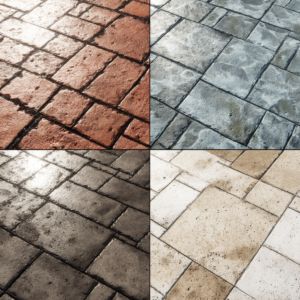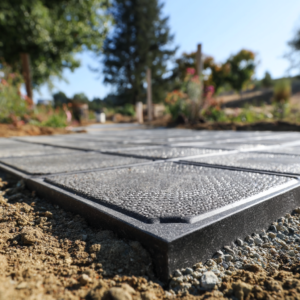Is paver edging necessary?
In all my years working in the hardscape industry, this exact question has been presented to me by most clients. And don’t be fooled: although it might seem like a minor detail at first glance, it’s one of the most critical elements to consider when installing a paver patio, walkway, or driveway.
Most people think of paver edging as a mere aesthetic element, which is far from the truth. It is not just about clean lines or a polished look – it’s about structural integrity and long-term performance.
If you have wondered whether paver edging is truly necessary for your project – or what could possibly go wrong without it – this article is here to give you real answers with a technical eye and a personal touch.
Read also: How to install paver edging – a DIY guide
Jump to:
Is paver edging necessary? Yes!
To put it simply, paver edging is often the unsung hero of a successful hardscape installation. It’s the physical barrier that holds everything in place, ensuring your pavers don’t shift, sink, or spread out over time. Without it, your patio or walkway might start out looking great, but it’s only a matter of time before gravity, traffic, and the elements start doing their damage.
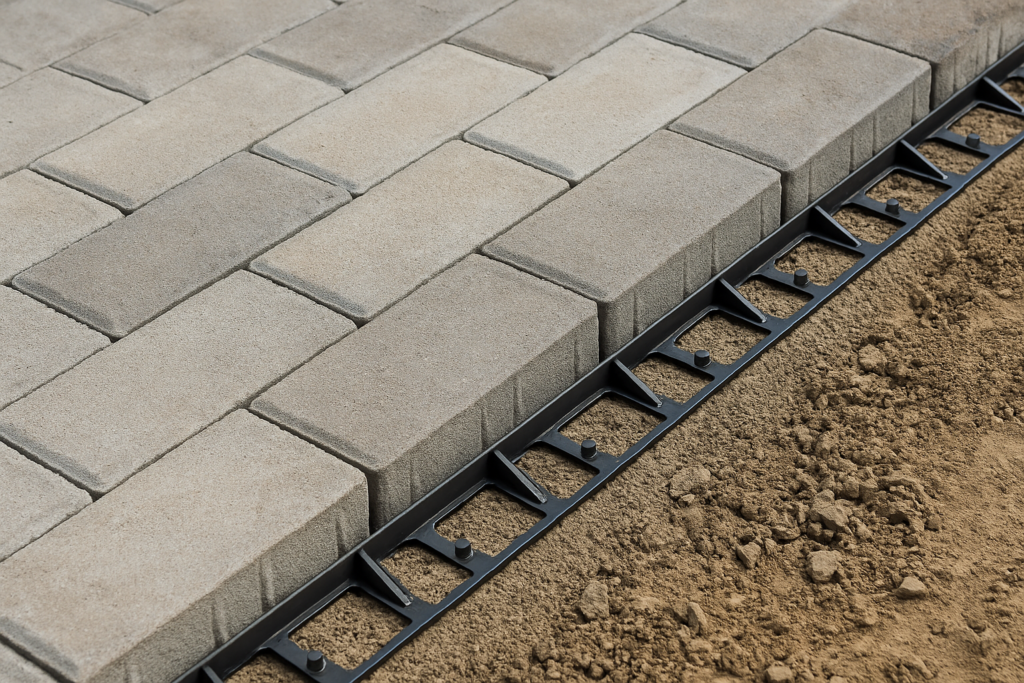
Pavers, no matter how tightly placed, rely on side support to maintain their position. Rain, foot traffic, or the occasional vehicle will gradually move those bricks or stones outward unless something stops them.
And that’s where edging comes in. It acts as a lateral support system, anchoring the outermost pavers and maintaining the overall shape and level of your project.
Another important element to consider is that edging also protects against erosion. Over time, water can wash away the joint sand between pavers, leading to instability. When edging is properly installed, it helps keep that sand in place, reducing weed growth and preventing gaps.
I have repaired many installations where the lack of edging caused major issues – so have my colleagues here at JS Brick. We can point to years of experience and dozens of cases that prove that, yes, paver edging is necessary at the end of the day.
How to choose the right type of paver edging, then?
There’s no one-size-fits-all when it comes to paver edging. The type you need depends on the purpose of the space, the materials used, and even your local climate.
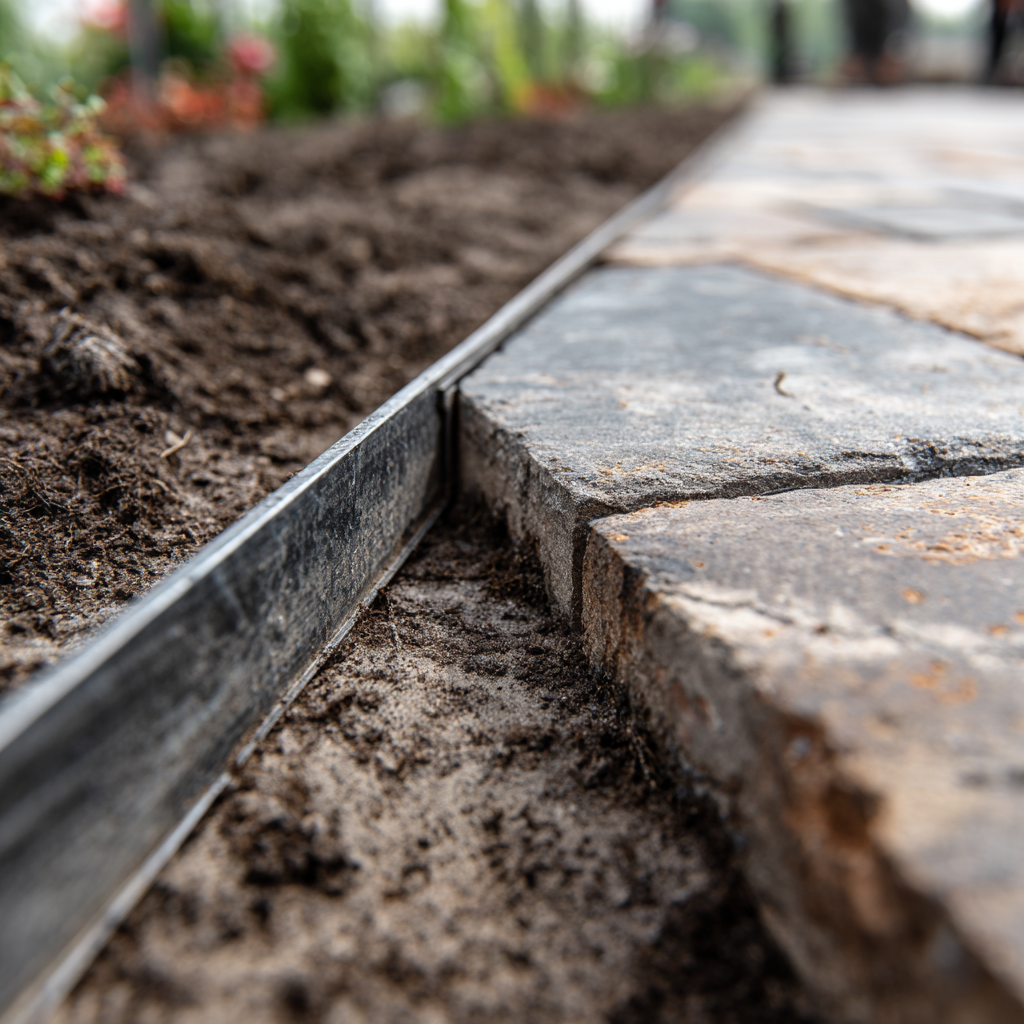
Plastic and Metal Edging
Plastic edging is flexible and easy to work with, which makes it ideal for curved installations or DIY-friendly projects. It’s often the go-to for residential landscaping because it’s budget-friendly and simple to anchor.
Metal edging, particularly aluminum or steel, offers a cleaner look and greater durability. It’s often used in commercial settings or driveways, where more strength is needed to resist vehicle loads. Metal edges hold their form exceptionally well, especially in high-traffic areas.
Concrete and Stone Edging
If you’re after a more permanent solution, concrete curbs or poured concrete edging deliver incredible stability. It’s more labor-intensive to install, but ideal for driveways or sloped areas.
Natural stone edging, while more expensive, adds elegance and charm. It blends seamlessly with flagstone or travertine pavers and is extremely durable, ideal for luxury pool decks or garden paths that demand aesthetic harmony with nature.
Manufactured Edging Systems
Modern “snap-edge” systems and polymer-based options combine durability and ease of installation. These are ideal for both DIYers and professionals seeking a clean look with long-term performance. They’re also flexible enough to work on both straight and curved layouts.
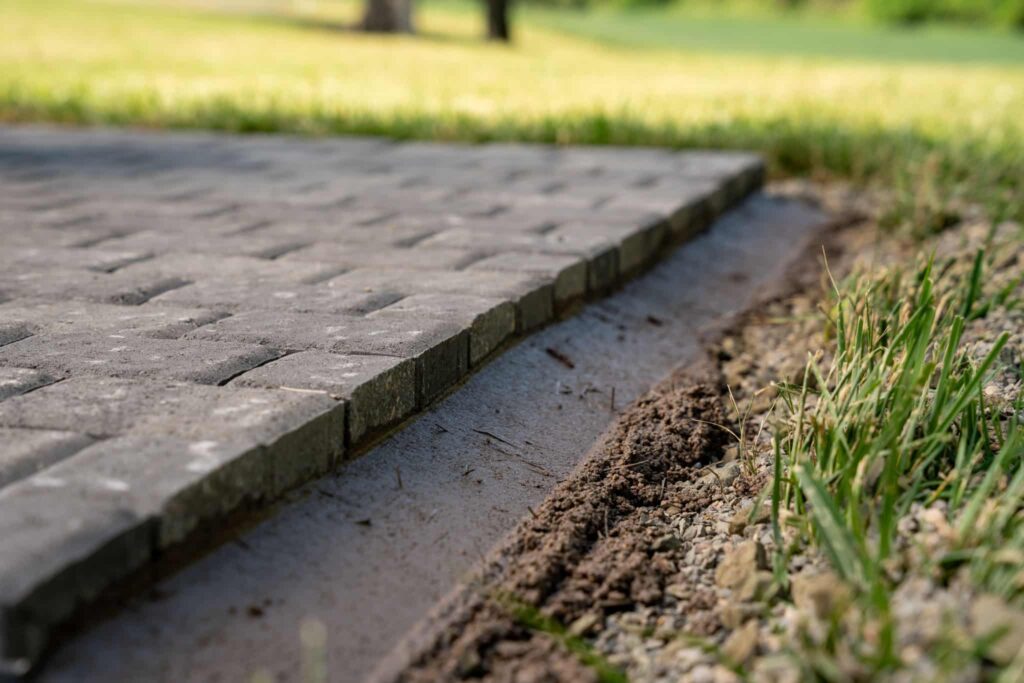
Regardless of the type, one principle stands: good edging keeps the project tight, neat, and long-lasting. The right material depends on what you’re building, where you’re building it, and how much maintenance you’re willing to do later.
What happens without edging?
Skipping paver edging might save you a few bucks upfront, but it often leads to expensive repairs later. Without a containment system, the edges of your patio or walkway are left vulnerable. Over time, you’ll see the pavers on the borders start to lean or slide out. Gaps form, weeds take over, and eventually the surface becomes uneven or unsafe.
One common sign of failed or missing edging is a wavy, broken border where the bricks are no longer flush. As the joint sand erodes, the structure loosens, making it easier for water to pool and freeze. This creates a cycle of freeze-thaw damage that only gets worse each year.
In some cases, people try to correct the problem by adding new sand or resetting pavers. But without proper edging, these are temporary fixes. Eventually, the entire section may need to be removed and rebuilt, costing more than if the edging had been done right the first time.
At JS Brick, we often help homeowners who have inherited these kinds of problems and always come back to the same point: edging is part of the foundation. Without it, the structure simply doesn’t hold.
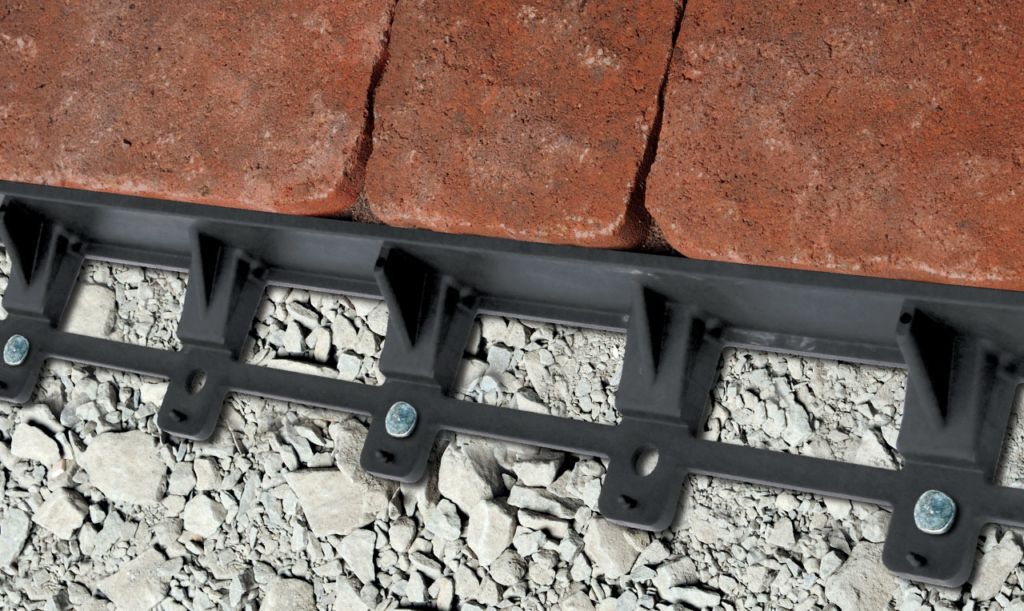
So, is paver edging necessary? Absolutely.
Edgers are the framework that preserves the integrity of your paver installation. Whether you’re working with travertine, concrete pavers, or natural stone, edging is essential for protecting your investment and extending the lifespan of your outdoor space.
A solid edging system means fewer weeds, less erosion, cleaner lines, and better drainage. It also means fewer headaches down the road. If you’re planning a new paver project, don’t overlook this crucial step.
At JS Brick, we’re committed to doing the job right from the start. So wait no more: if you happen to be around Sarasota County, FL, and want expert advice on which edging works best for your specific design, we’re here to help.
Get in contact today for a free estimate – and let’s make sure your pavers stay as perfect as the day they were laid.

